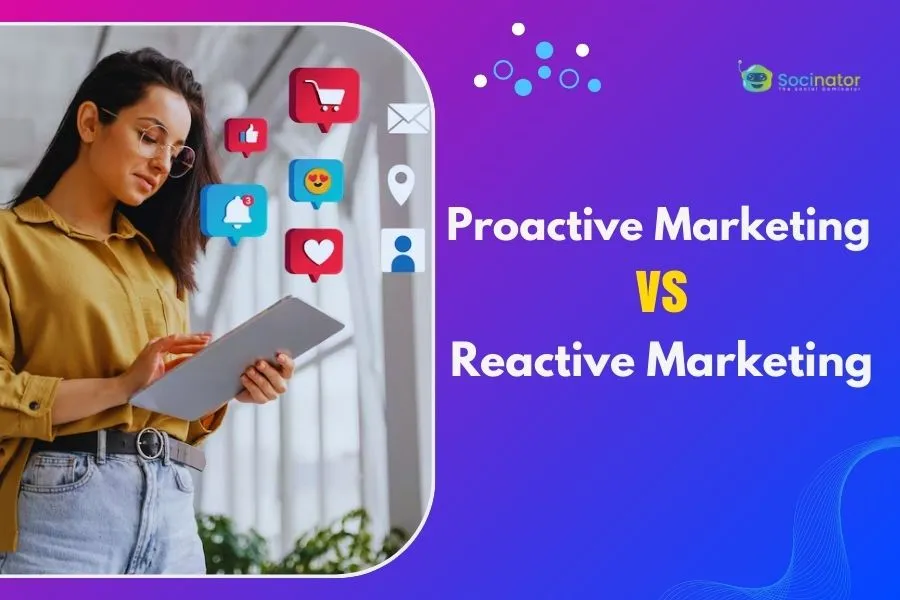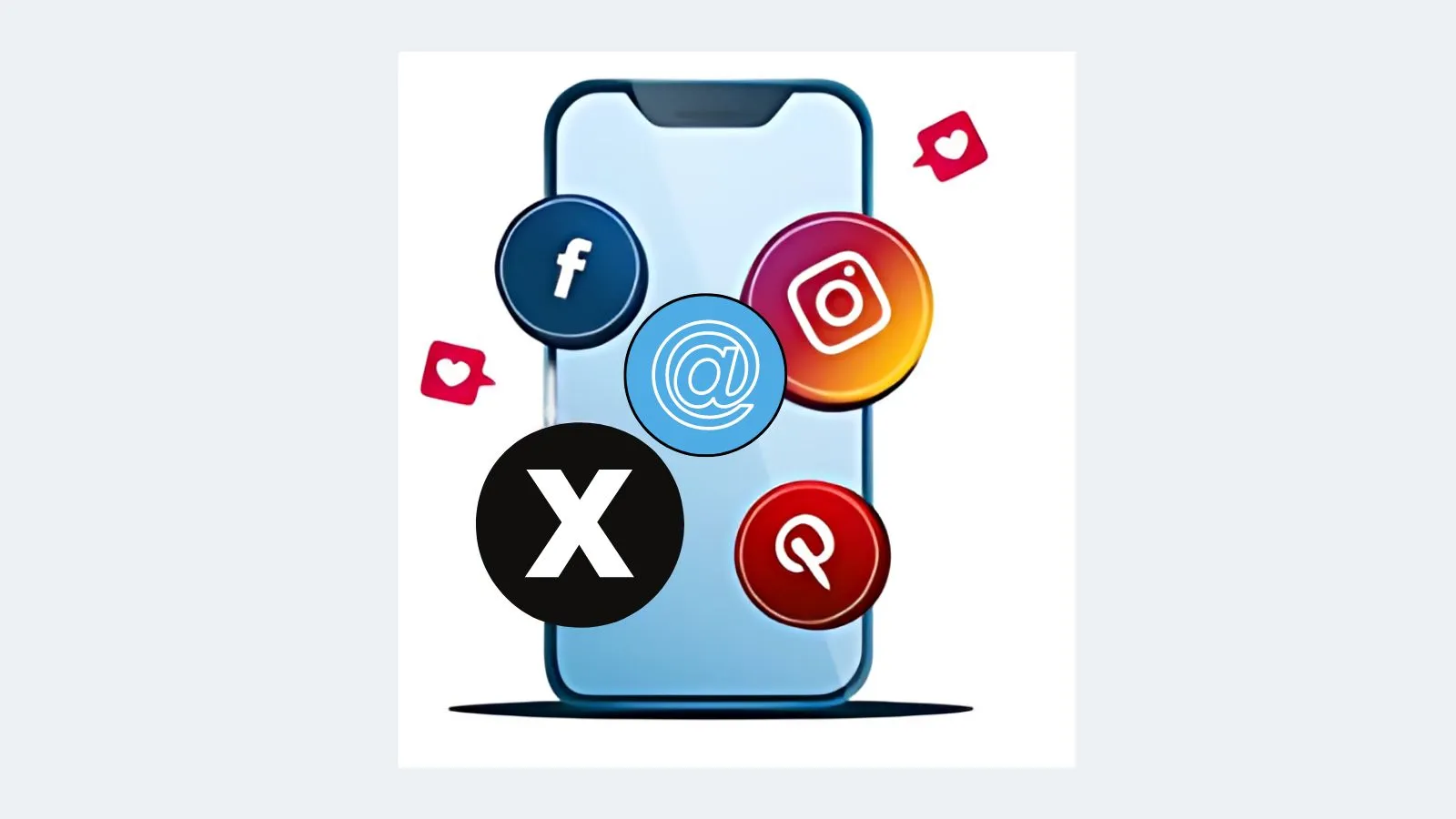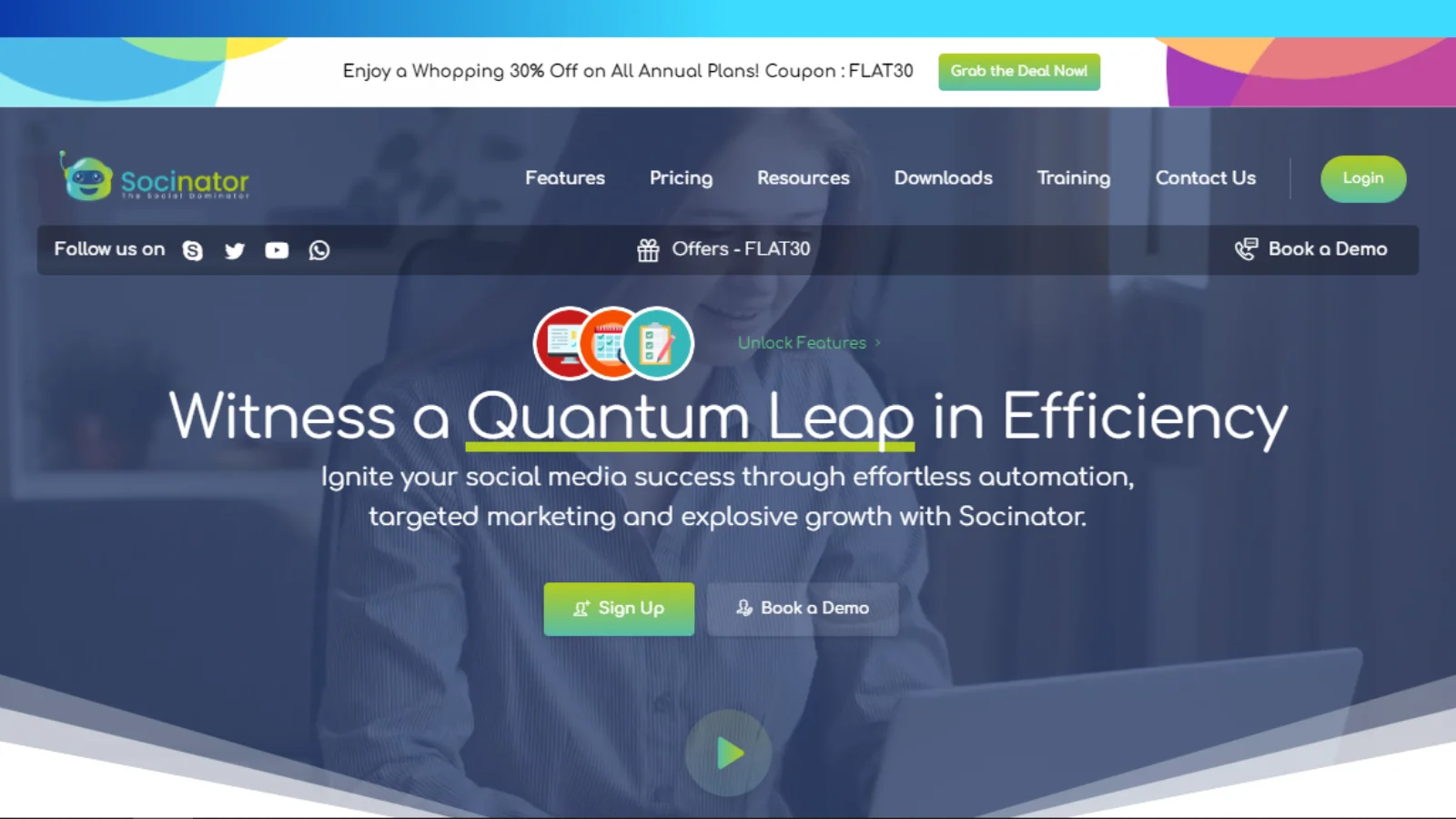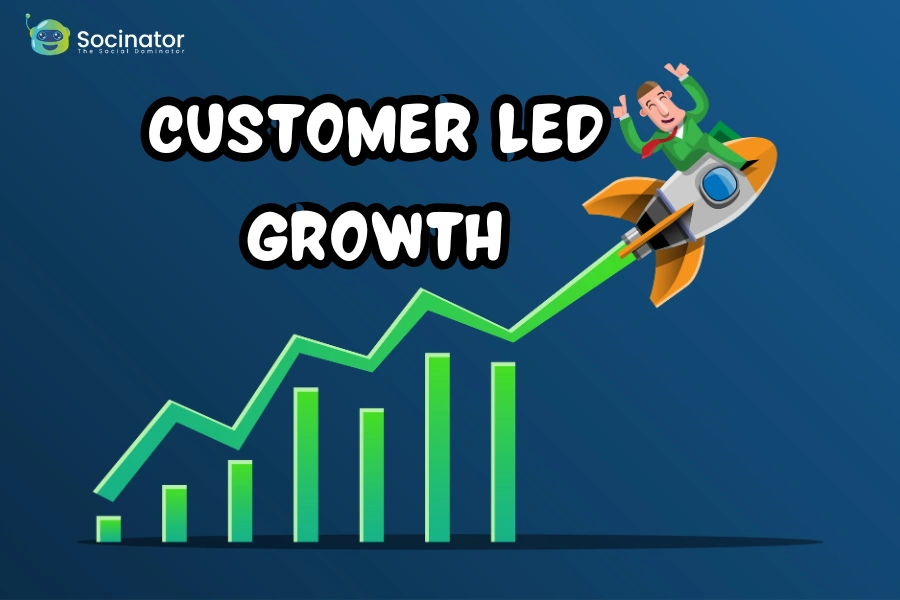Reactive and Proactive marketing represent two fundamental approaches to navigating the ever-evolving business landscape. Proactive marketing focuses on anticipating future trends, customer needs, and market changes to position a brand ahead of the competition. In contrast, reactive marketing thrives on flexibility and responsiveness, addressing current events and real-time customer feedback.
Understanding the nuances, benefits, and challenges of each can significantly impact a brand’s success. This blog will delve into these strategies and the difference between proactive and reactive marketing, providing insights to help you choose the right approach for your business.
Listen To The Podcast Now!
Proactive Vs Reactive Marketing-
Proactive marketing – Proactive marketing is a forward-thinking approach to anticipating future trends, consumer needs, and market changes. This strategy emphasizes long-term planning, data analysis, and strategic foresight. It enables businesses to shape market dynamics rather than merely responding to them.
Reactive Marketing – A reactive marketing strategy is a responsive approach where businesses adapt their marketing efforts based on current events, trends, customer feedback, or competitor actions. Unlike proactive marketing, which involves planning and executing long-term strategies based on predicted trends and internal goals, reactive marketing focuses on responding swiftly to external stimuli.
Let us delve deeper into these two strategies and how they contrast within.
Key Characteristics Of Proactive Marketing
Market Research and Data Analysis: Proactive marketing relies heavily on comprehensive market research and data analytics. Businesses can forecast future changes and prepare accordingly by understanding market trends, consumer behavior, and competitive landscapes.
Strategic Planning: This approach involves meticulous planning and strategy development. Businesses create detailed marketing plans that outline long-term goals, target audiences, and specific tactics to achieve those goals.
Innovation and Creativity: Proactive marketers are innovators. They continuously seek new ways to engage their audience, develop unique products or services, and differentiate themselves from competitors.
Risk Management: Proactive marketing can develop contingency plans and mitigate risks by anticipating potential market shifts. This foresight allows businesses to navigate uncertainties more effectively.
Benefits Of Proactive Marketing Strategies
Competitive Advantage: Businesses anticipating market trends and adapting may often gain a significant competitive edge. They appear to be industry leaders and trendsetters.
Customer Loyalty: Proactive marketing builds a loyal customer base by consistently meeting and exceeding customer expectations. This loyalty translates to higher customer retention rates and long-term revenue.
Brand Reputation: Proactive marketing helps in establishing a positive brand image. Businesses that innovate and lead the market appear to be more favorably by consumers and industry peers.
Higher ROI: With well-planned strategies and efficient use of resources, proactive marketing can lead to higher returns on investment. Companies can allocate their marketing budgets more effectively, avoiding unnecessary expenditures.
Challenges Of Proactive Marketing
Resource Intensive: Proactive marketing demands investments in research, technology, and skilled personnel. Small companies with fewer resources might struggle to implement this effectively.
Uncertainty: Despite thorough research and planning, predicting future market trends involves a degree of uncertainty. Incorrect forecasts can lead to wasted resources and missed opportunities.
Adaptability: While proactive marketing focuses on long-term planning, businesses must remain flexible and adapt to unexpected changes. Balancing long-term strategies with short-term adjustments can be challenging.
Having explored proactive marketing, let us now delve into reactive marketing.
Key Characteristics Of Reactive Marketing
Reactive marketing is a responsive approach that involves reacting to current events, trends, and consumer behavior. This strategy is often characterized by its immediacy and flexibility, allowing businesses to capitalize on real-time opportunities. These are some characteristics of reactive marketing:
Real-Time Response: Reactive marketing emphasizes quick responses to current events, trends, and consumer feedback. This approach requires agility and the ability to make swift decisions.
Social Media Engagement: Reactive marketing relies heavily on social media platforms. Businesses monitor social media channels to gauge public sentiment and engage with their audience in real time.
Customer Feedback: Reactive marketers prioritize listening to their customers. They use feedback to adjust their strategies, improve products or services, and address any issues promptly.
Trend Utilization: This approach involves leveraging trending topics, memes, and cultural phenomena to create relevant and timely marketing content.
Benefits Of Reactive Marketing
Increased Engagement: By responding to current events and trends, reactive marketing can significantly boost audience engagement. Consumers appreciate timely and relevant content, leading to higher interaction rates.
Flexibility: Reactive marketing allows businesses to remain flexible and adaptable. Companies can quickly shift their strategies in response to market changes, customer feedback, or unforeseen events.
Cost-Effective: Since reactive marketing often involves leveraging existing trends and customer feedback, it can be more cost-effective than proactive strategies that require extensive planning and resources.
Enhanced Customer Relationships: By actively listening and responding to customers, businesses can build stronger relationships and foster a bond of community and trust. This way you can manage your community.
Challenges Of Reactive Marketing
Short-Term Focus: Reactive marketing often focuses on short-term gains, potentially neglecting long-term strategy and brand building. This short-sightedness can hinder sustained growth and development.
Resource Allocation: Constantly monitoring and responding to trends requires dedicated resources and personnel. Smaller businesses may struggle to allocate the vital resources for effective reactive marketing.
Inconsistent Messaging: The need for quick responses can lead to inconsistent messaging. Without a cohesive strategy, reactive marketing efforts may appear disjointed and uncoordinated.
Over-reliance on Trends: Relying too heavily on trends can make a brand appear opportunistic rather than authentic. Consumers may perceive the brand as insincere if it constantly jumps on the latest bandwagon.
We have explored the in-depth differences between reactive and proactive marketing and discussed the contrast between their core ideas. Nowadays, many marketers utilize proactive and reactive marketing strategies in their social media campaigning. We suggest you look at the given social media marketing strategy template to use these strategies effectively. But before getting into the template, let us discuss social media marketing.
Also Read
Customer Sentiment Analysis For Better Business?
7 Reasons You Should Invest In Community Management Tools!
What Is Social Media Marketing?
Social media marketing involves promoting a brand, product, or service through various social media platforms, such as Facebook, Twitter, Instagram, and LinkedIn. It refers to creating and sharing content, engaging with target audiences, and analyzing the performance of marketing efforts to achieve specific goals, such as increasing brand awareness, generating leads, or driving sales.
Now we have an understanding of social media marketing, it’s time to uncover some strategies and templates for your brand or business.
Social Media Marketing Strategy Template
 A social media marketing strategy is a detailed plan that outlines how a business will use social media platforms to achieve its marketing goals. It involves defining clear objectives, understanding the target audience, choosing the appropriate social media platforms, creating engaging content, and using analytics to measure performance and adjust tactics accordingly.
A social media marketing strategy is a detailed plan that outlines how a business will use social media platforms to achieve its marketing goals. It involves defining clear objectives, understanding the target audience, choosing the appropriate social media platforms, creating engaging content, and using analytics to measure performance and adjust tactics accordingly.
Creating a robust social media marketing strategy is crucial for proactive and reactive marketing efforts. A well-crafted strategy helps achieve long-term goals while being agile enough to respond to real-time opportunities. Below is a comprehensive template to guide you in developing an effective social media marketing strategy.
1. Define SMART Goals
Start by identifying what you aim to achieve with your social media marketing. SMART goals are specific, measurable, attainable, relevant, and time-bound (SMART). Common goals include:
- Increase Brand Awareness: Enhance visibility and reach a larger audience.
- Drive Traffic to Your Website: Use social media to bring more visitors.
- Generate Leads and Sales: Convert your social media audience into customers.
- Foster Community Engagement: Build a loyal and engaged community.
- Boost Brand Loyalty: Strengthen relationships with existing customers.
2. Understand Your Audience
Research and learning more about your audience can help you craft relevant and engaging content. Conduct market research to understand demographics, interests, behaviors, and pain points. Use social media analytics tools to gain insights into your audience’s preferences and how they interact with your content.
3. Conduct Market Research
Performing market research refers to gathering data and information and analyzing the target market. Especially when you try proactive marketing, researching the market would help you predict future trends. It will also help you to learn about consumer behavior for implementing a reactive marketing strategy.
Here are some effective methods:
- Surveys and Questionnaires: Directly ask your current or potential customers about their preferences, interests, challenges, and demographics. Online tools like Google Forms can facilitate this process.
- Focus Groups: Engage a small group of people from your target market in discussions to gain qualitative insights into their attitudes and behaviors.
- Interviews: Conduct one-on-one interviews with a selection of your audience to gain deeper insights into their individual experiences and preferences.
- Secondary Research: Utilize existing research reports, industry studies, and market analysis available through professional associations, research firms, and government publications.
Analyze Demographics
Demographic data helps you understand the characteristics of your audience. Main demographic factors include:
- Age: Knowing the age range of your audience helps tailor content and marketing strategies that appeal to specific generational characteristics.
- Gender: Understanding gender distribution can guide product development, messaging, and advertising strategies.
- Location: Geographic data helps in localizing your content and offers. It proves highly advantageous for businesses with physical locations or region-specific services.
- Income Level: Knowing their income helps you set prices and create content that matches what your audience can afford
- Education Level: Knowing your audience’s education level can shape how you create content, adjusting its complexity and style accordingly.
Explore Psychographics
Psychographics is the next level for demographics. It helps you to understand the psychological attributes of your audience:
- Interests and Hobbies: Knowing what your audience enjoys can help you create content that aligns with their passions.
- Values and Beliefs: Understanding what matters to your audience can guide your brand messaging and positioning.
- Lifestyle: Insights into your audience’s daily lives, activities, and behaviors help create relevant and relatable content.
- Personality Traits: Knowing the personality traits of your audience can help tailor your brand voice and communication style.
Behavioral Analysis
Analyzing your audience’s behavior provides insights into how they interact with your brand:
- Purchase Behavior: Track what, when, and how often your audience buys from you. It helps in creating targeted promotions and loyalty programs.
- Online Behavior: Analyze how your audience navigates your website, interacts with your social media, and engages with your emails. Tools like Google Analytics and social media insights are invaluable for this.
- Content Preferences: Determine what type of content (videos, blogs, infographics) resonates most with your audience. Social media analytics can show which posts get the most engagement.
- Engagement Patterns: Understand the times and days when your audience is most active online. It helps in scheduling your posts for maximum reach and interaction.
4. Choose the Right Platforms
Choose the right social media platform that aligns with your business goals and target audience. Popular platforms include:
Facebook: Great for community building and advertising.
Instagram: Highly used for visually appealing content with high quality.
Twitter: Best for real-time updates and customer engagement.
LinkedIn: Great for B2B social media marketing strategies and professional networking
Create Engaging Content
Develop a content strategy that resonates with your audience and supports your goals. Your content should be a mix of:
- Educational Content: Simplify your content strategy by sharing tips, how-tos, and industry insights.
- Entertaining Content: Use humor, stories, and viral trends to engage your audience.
- Promotional Content: Highlight your products, services, and special offers.
- User-Generated Content: Engage with your audience and encourage them to create, share, or be a part of your campaign or content.
- Interactive Content: Use polls, quizzes, and live videos to boost engagement.
5. Develop a Content Calendar
Plan your content using a content calendar. It helps in maintaining consistency and ensures a steady stream of content. Your calendar should include:
- Posting Schedule: Determine the frequency and timing of your posts.
- Content Themes: Assign themes or topics for each day or week.
- Content Formats: Plan a variety of formats, such as videos, images, and blog posts.
- Key Dates and Events: Include holidays, industry events, and company milestones.
Implement Proactive and Reactive Strategies
Balance your proactive marketing and reactive marketing efforts. For proactive strategies:
Proactive Strategies:
1. Campaign Planning:
- Plan: Schedule major marketing campaigns and promotions well in advance. It includes setting clear goals, timelines, and key performance indicators (KPIs) to measure success.
- Content Calendar: Develop a content calendar to ensure a steady stream of planned posts aligning with your overall marketing strategy.
2. Content Series:
- Recurring Themes: Create recurring content themes or series that resonate with your audience. For instance, you could post weekly industry tips, monthly employee spotlights, or quarterly company updates.
- Engagement: Consistent themes can build anticipation and regular engagement, making your audience look forward to your posts.
Evergreen
3. Content:
- Long-Term Relevance: Focus on creating content that remains valuable and relevant over time, such as how-to guides, best practices, and in-depth industry analyses.
- Rechargeable: Evergreen content can be reshared periodically to reach new followers and reinforce your brand’s expertise.
Reactive Strategies:
- Trend Monitoring:
- Stay Updated: Keep an eye on trending topics, news, and events relevant to your industry. Use tools and platforms to monitor industry trends and popular discussions.
- Timely Content: Quickly create and share content that leverages these trends, positioning your brand as current and in-the-know.
2. Real-Time Engagement:
- Prompt Responses: Engage with your audience in real-time by responding to comments, questions, and mentions as quickly as possible. Being attentive and responsive will show your audience that they matter to you.
- Interaction: Participate in discussions on relevant posts by others, adding your insights and fostering a sense of community.
3. Crisis Management:
- Preparedness: Develop a strategy for handling negative feedback or crises. It includes having predefined responses for common issues and a protocol for escalating serious matters.
- Transparency: Address problems openly and honestly to maintain trust. Apologize if necessary and provide solutions to mitigate any negative impact.
6. Measure and Adjust
Track your KPIs to measure your performance regularly, and it can include these:
1. Reach and Impressions
Reach refers to the number of new or unique viewers who watched your content. It helps you determine your audience size.
Impressions indicate the total number of times your content is displayed, regardless of whether it is clicked. This metric can show how often people are seeing your content.
2. Engagement Rate
Engagement Rate measures the level of interaction your content receives, such as likes, comments, shares, and other interactions. A high engagement rate indicates that your content is providing some value to your target audience.
3. Website Traffic
Website Traffic tracks the number of visitors landing on your website from social media platforms. Monitoring this helps you understand how your social media posts bring traffic to your site effectively.
4. Conversion Rate
Conversion Rate measures the percentage of social media interactions that result in a desired action, such as making a purchase or filling out a lead form. This metric is crucial for assessing the return on investment (ROI) of your social media efforts.
5. Customer Sentiment
Customer Sentiment assesses overall mood and feedback from your audience about your brand. By analyzing comments, reviews, and mentions, you can gauge whether the perception of your brand is positive, negative, or neutral.
7. Utilize Automation Tools
Leverage social media management tools to streamline your efforts and analyze your performance. Essential tools include:
Analytics Tools: Platforms like Google Analytics and native platform insights provide valuable data on your social media performance.
Use these insights to adjust your strategy, optimize your content, and improve your overall performance.
Automation can streamline proactive marketing by scheduling regular posts and maintaining consistent engagement, ensuring your brand stays top-of-mind. It also enhances reactive marketing by quickly responding to customer interactions and trends, enabling timely and relevant engagement. If you are looking for such a tool, why not try the best social media automation software- Socinator.
Socinator – A Social Media Automation Tool
Socinator, an all-in-one social media automation tool, is designed to simplify this process and enhance your social media strategies. With Socinator, you can streamline your social media management. Here are the key features of Socinator that make it an essential tool for social media marketers:
1. Multi-Platform Support – Socinator supports multiple social media platforms, allowing you to manage all your accounts from a single dashboard. It includes popular platforms such as Facebook, Instagram, Twitter, LinkedIn, Pinterest, YouTube, Reddit, and Tumblr so you can automate your postings.
2. Automated Scheduling and Posting – One of Socinator’s core features is its ability to schedule and automate posts across all supported platforms. It ensures your content is published at optimal times, even when you are offline. Features include:
3. Advanced Analytics and Reporting – It provides in-depth analytics and reporting tools to track the performance of your social media campaigns. It displays performance metrics like likes, shares, comments, and followers.
4. Social Media Automation- Socinator saves you more time by automating and reducing repetitive tasks. Socinator offers a wide range of automation features, including:
- Auto-Follow/Unfollow: Automatically follow or unfollow users based on specific criteria.
- Auto-Like/Comment: Engage with posts by liking or commenting automatically.
- Auto-Messaging: Send personalized messages to new followers or prospects.
- Auto-Reply: Respond to comments or messages automatically, ensuring prompt engagement.
Conclusion
Proactive marketing equips brands to anticipate trends and lead the market, while reactive marketing empowers them to respond to real-time events and feedback. By balancing these approaches, businesses can achieve long-term growth and immediate engagement. As you implement these strategies, remember to remain flexible and adaptive, leveraging insights and tools to refine your tactics.
FAQs
What Are Proactive Companies?
Proactive companies focus on sustainable growth and long-term success. They invest in research and development, employee training, and strategic planning to build a strong foundation for the future. These businesses prioritize innovation and continuous improvement, understanding that today’s investments will yield tomorrow’s rewards. By anticipating market trends and preparing for future challenges, proactive companies stay ahead of the competition and create lasting value.
What Is Proactive Market Selection?
Proactive market selection, also known as predictive marketing, empowers marketers to anticipate and meet consumers’ needs by identifying hidden requirements and forecasting future actions. By leveraging data analytics to study consumer behavior, brands can stay ahead of trends and deliver tailored solutions that resonate with their audience. This strategic approach ensures that businesses are not just reacting to market demands but shaping them proactively.









